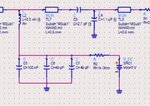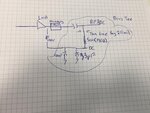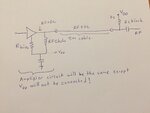ktr
Full Member level 3
Hello all,
I am designing a LNA to place right after an antenna to minimize the cable loss( also to deal with mixer products on later stages) induced into my receiver chain. I'm planning to place this LNA in a small-box right near the antenna for efficiency. Since starting this, I have seen a lot of Bias-tee conversation about it; but I'm confused of what is the difference between a Bias Tee and a normal RF choke.
I searched around but failed to found a resource to learn how to design a bias tee in schematic, or draw one on a layout.

Normally I would just use a RF-choke like this, but I am having a hard time imagining what would a seperate bias-tee would look like.
Any suggestions or help is welcome.
Best Regards,
ktr
---
Edit: My frequency is about 4Ghz.
I am designing a LNA to place right after an antenna to minimize the cable loss( also to deal with mixer products on later stages) induced into my receiver chain. I'm planning to place this LNA in a small-box right near the antenna for efficiency. Since starting this, I have seen a lot of Bias-tee conversation about it; but I'm confused of what is the difference between a Bias Tee and a normal RF choke.
I searched around but failed to found a resource to learn how to design a bias tee in schematic, or draw one on a layout.

Normally I would just use a RF-choke like this, but I am having a hard time imagining what would a seperate bias-tee would look like.
Any suggestions or help is welcome.
Best Regards,
ktr
---
Edit: My frequency is about 4Ghz.



